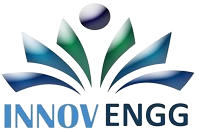Imagine investing months perfecting a product design only to discover, after manufacturing, that a small flaw makes it unusable. The cost? Lost time, wasted materials, and thousands of dollars in rework.
Before any product reaches the production floor, it must go through one critical step design validation. This process ensures that what looks perfect on screen performs just as effectively in the real world. Design validation is not just about checking dimensions or materials; it’s about confirming that the product will function, feel, and last as intended once it’s manufactured and used.
Skipping this stage can lead to costly production delays, material waste, and even complete design failures. More importantly, it can damage your brand’s reputation and erode customer trust. By validating your design early, you bridge the gap between design intent and real-world performance, transforming theoretical concepts into reliable, manufacturable products.
In this article, we’ll explore how to effectively validate product designs before manufacturing helping you minimize risk, save resources, and ensure your product’s success from concept to completion.
Understanding Product Design Validation
Design validation is the process of confirming that a product design meets its intended purpose and performs as expected in real-world conditions. It goes beyond aesthetics or theoretical performance it ensures the final product satisfies user needs, safety requirements, and performance expectations once manufactured and deployed.
A common point of confusion lies between design validation and design verification. While verification ensures the product is designed “right” checking technical accuracy, specifications, and tolerances validation ensures the right product is being built in the first place. In other words, verification asks, “Does it meet the design specs?” whereas validation asks, “Does it meet the user’s needs?”
The ultimate objective of design validation is to confirm that the product not only works but also delivers reliability, safety, and satisfaction throughout its lifecycle. It aligns engineering intent with user experience reducing risk, ensuring compliance, and optimizing performance before manufacturing begins.
Key Stages of Design Validation
1. Concept Validation
Concept validation begins at the earliest stage of design development. Here, the goal is to test assumptions before investing time and money in detailed engineering. Teams review sketches, conduct feasibility studies, and build mock-ups to visualize ideas. At this stage, customer feedback is invaluable it helps identify what truly matters to end users and prevents costly changes later in the process. Early validation ensures that the concept is both technically feasible and market-ready.
2. Prototype Validation
Once a concept is approved, the next phase involves transforming digital models into physical prototypes using methods like 3D printing or CNC machining. Prototyping allows designers and engineers to assess a product’s ergonomics, aesthetics, and usability. Rapid iterations at this stage help refine the product based on real-world testing and user interactions. The faster these feedback loops occur, the closer the design moves toward optimal functionality and manufacturability.
3. Functional Validation
Functional validation is where the product is tested under real-world operating conditions. Engineers simulate stress, temperature, vibration, or motion to evaluate how the design holds up to environmental and operational factors. Tools such as digital twins and advanced CAD simulations help visualize and predict product behavior before committing to physical production. This stage ensures the design performs consistently and reliably under expected (and unexpected) use cases.
4. Compliance & Safety Validation
Every product must comply with specific industry standards and safety regulations (such as ISO, CE, or ASTM). At this stage, materials, construction methods, and overall safety are tested to meet these benchmarks. Environmental testing may also be required to ensure products are sustainable and safe throughout their lifecycle. This step not only guarantees compliance but also builds customer trust and brand credibility.
5. Pre-Production Validation
The final validation stage involves pilot production runs. This is where manufacturability and assembly efficiency are tested at scale. Engineers assess material availability, production timing, and assembly challenges to identify any last-minute adjustments before full-scale manufacturing. Successful pre-production validation ensures a smooth transition from design to mass production minimizing errors, downtime, and waste.
Methods & Tools for Effective Validation
Modern design validation relies heavily on advanced digital and analytical tools. CAD software such as SolidWorks, ANSYS, and Fusion 360 enables detailed modeling, simulation, and visualization. Virtual prototyping and digital twins allow engineers to evaluate designs in simulated real-world environments before any material is used.
Analytical methods like Finite Element Analysis (FEA) and Computational Fluid Dynamics (CFD) test how a product responds to stress, pressure, and airflow. In addition, user testing and feedback loops ensure that real-world usability aligns with engineering assumptions. Finally, using the Design of Experiments (DoE) approach helps optimize design parameters systematically, improving performance and reliability with fewer physical trials.
Common Mistakes to Avoid in Design Validation
Even experienced teams can make costly mistakes during validation. One of the most common errors is relying solely on digital simulations without confirming results through physical testing. Simulations are powerful but cannot account for every real-world variable.
Another pitfall is neglecting user feedback, which can lead to a technically sound but impractical design. Skipping proper documentation and version control often results in confusion, missed insights, and duplicated errors. Lastly, failing to consider manufacturability early can cause production bottlenecks, even after a design passes all validation tests.
Best Practices for Successful Design Validation
Effective validation is built on collaboration, structure, and iteration. Involving cross-functional teams including engineering, production, and quality control ensures every perspective is addressed. Early and continuous validation at each design stage helps detect issues when they are easiest to fix.
Maintaining thorough documentation and traceability throughout the process supports accountability and future improvements. Adopting iterative and agile design cycles enables continuous refinement, allowing your team to create reliable, high-performing products while keeping development efficient and flexible.
Conclusion
Validating product designs before manufacturing is not a step to skip it’s a safeguard against uncertainty. It saves time, minimizes waste, and ensures the final product performs exactly as intended. More importantly, it protects your brand’s reputation and ensures long-term customer satisfaction. By integrating validation into every stage of your development process, you set the foundation for innovation, reliability, and production excellence.
Contact Innovengg for professional design review, prototyping, and validation services to ensure your ideas are production-ready and built for performance.

